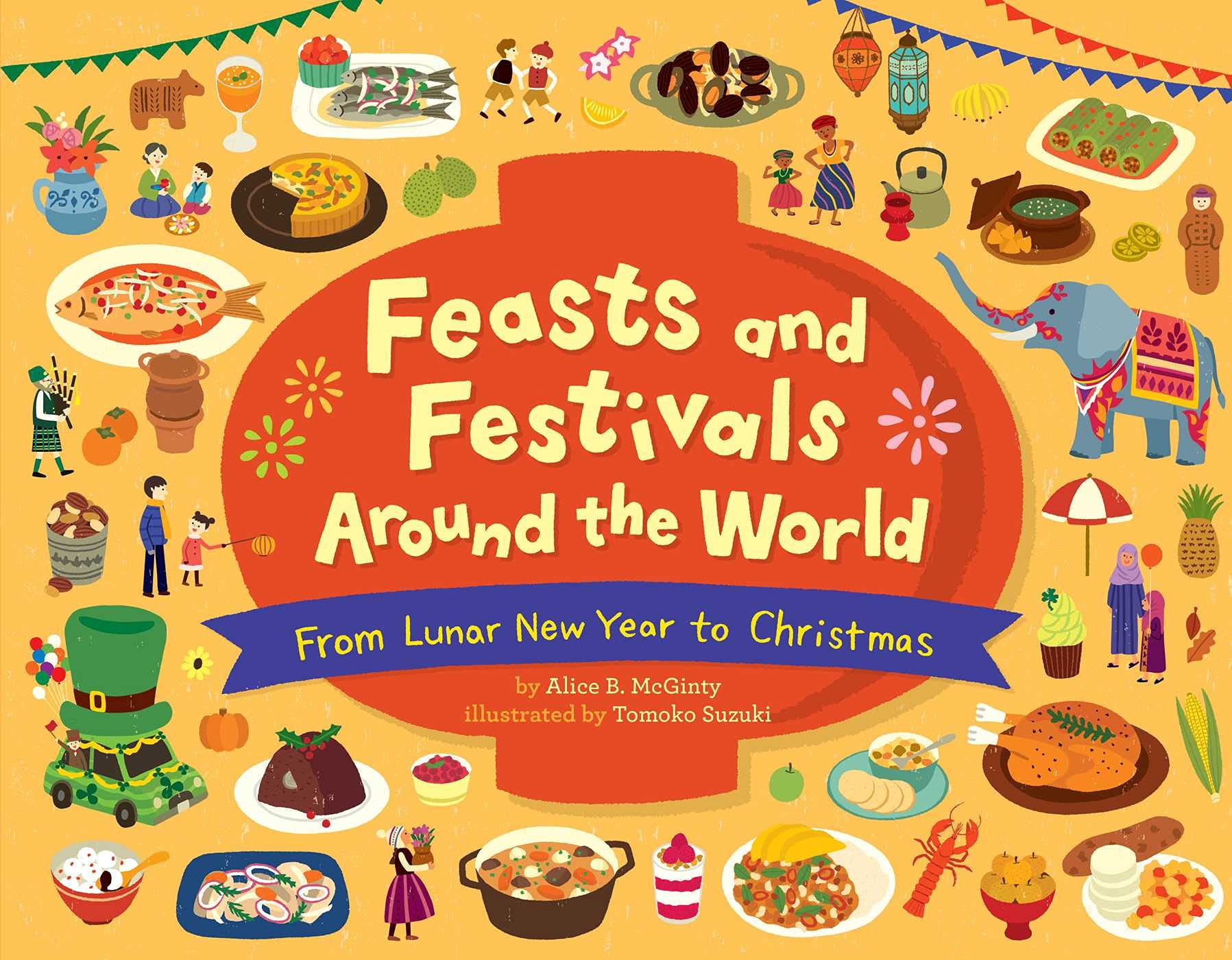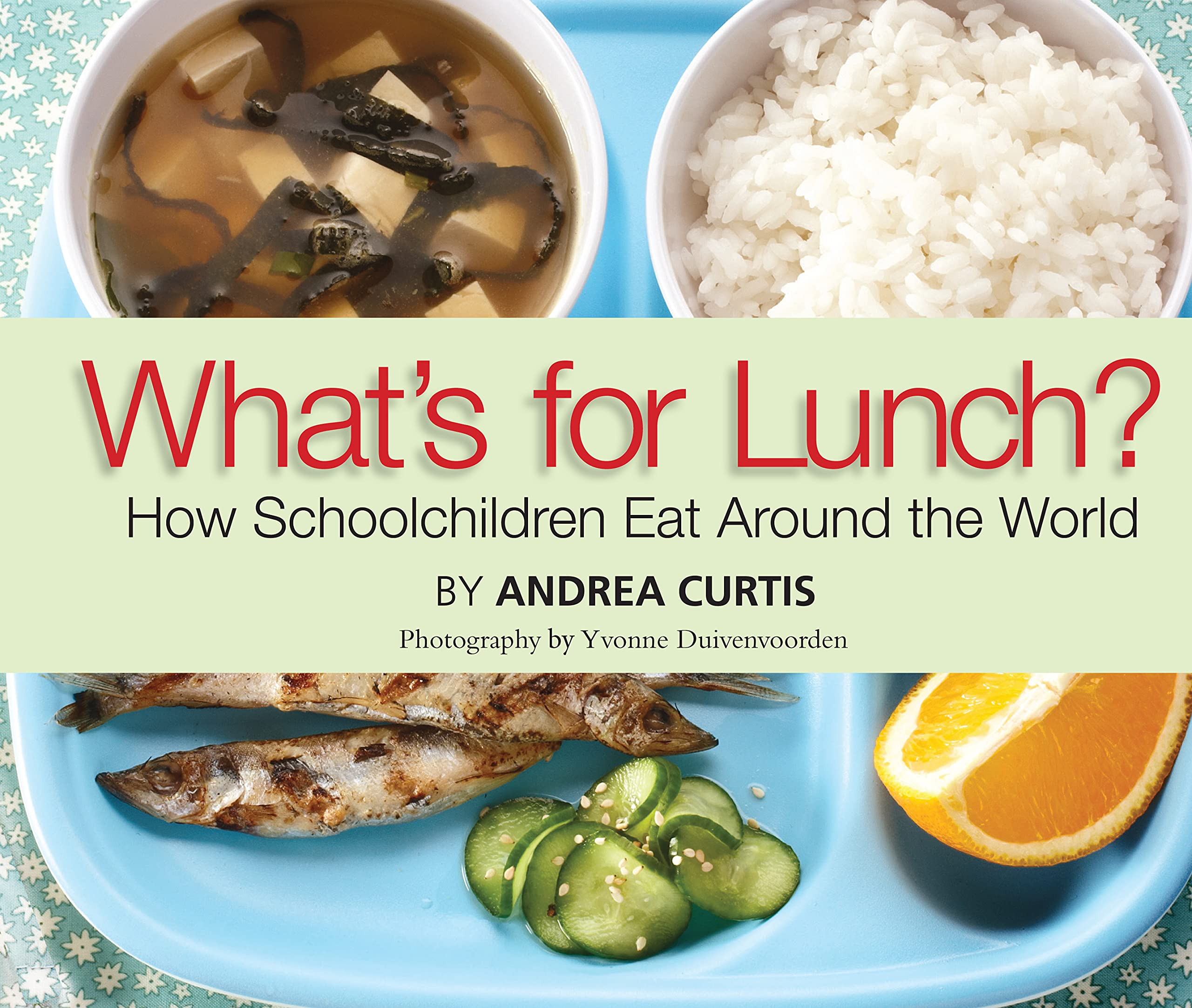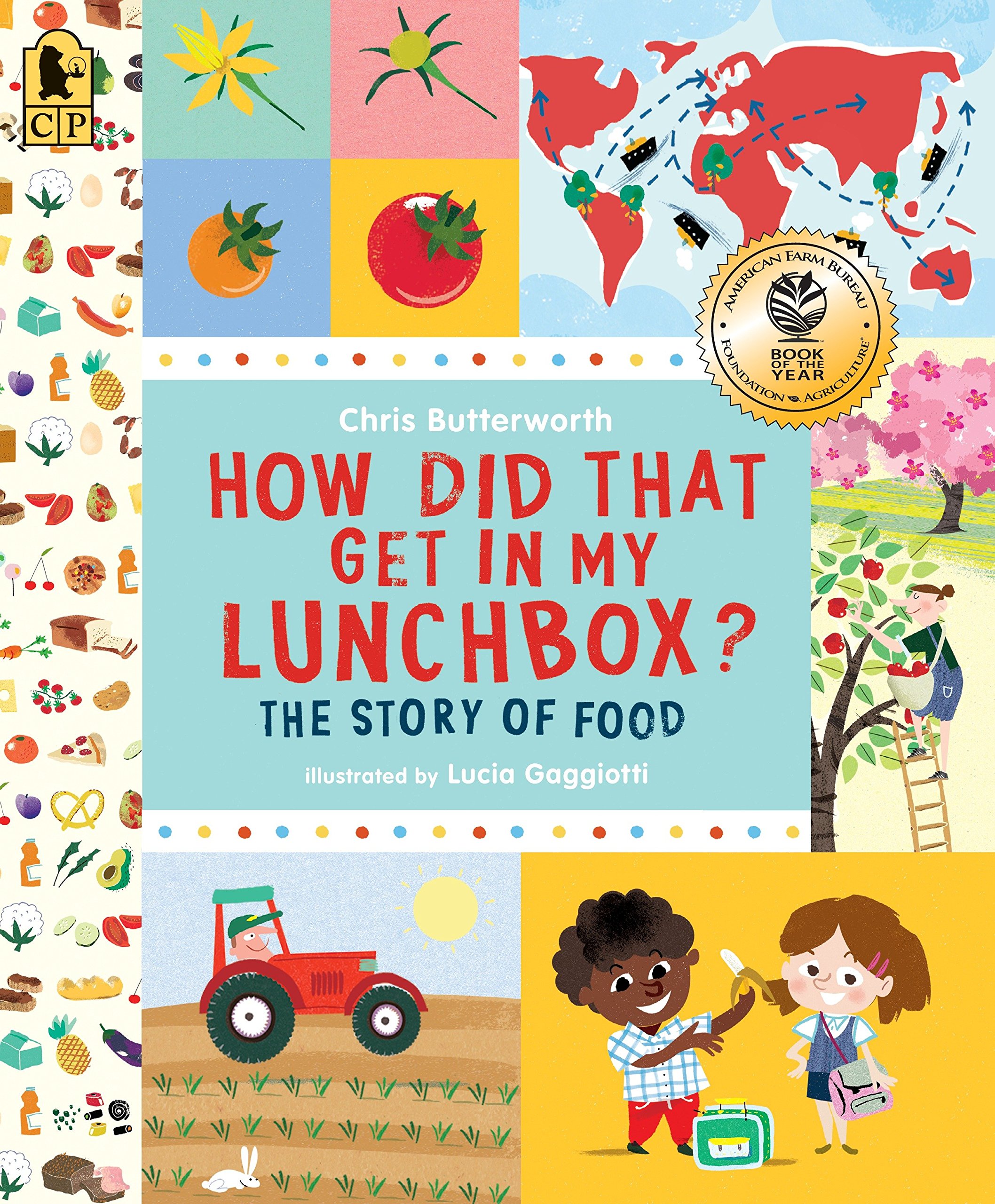 Relevancy and Engagement
ny.agclassroom.org
Relevancy and Engagement
ny.agclassroom.org
Cultures, Food, and Communities Around the World (Grades K-2)
Grade Level
Purpose
Students explore different cultures around the world and their unique traditions centered around food and its preparations. Students discover how food gets from the farm to the grocery store. Grades K-2
Estimated Time
Materials Needed
Engage:
- Feasts and Festivals Around the World by Alice B. McGinty
Activity 1: What's for Lunch?
- World map or World Fabric Map*
- Lunch Cards* handout, cut and laminated
- Whiteboard-safe tape or magnets
- What's for Lunch? by Andrea Curtis
*The World Fabric Map and Lunch Cards are available for purchase from agclassroomstore.com.
Activity 2: How Did That Get in My Lunchbox?
- How Did That Get in My Lunchbox? by Chris Butterworth
- Food Supply Chain Cards
Vocabulary
agriculture: the science or practice of farming, including cultivation of the soil for the growing of crops and the rearing of animals to provide food, wool, and other products
climate: the prevailing weather conditions in a specific area over a long period of time
commodity: a primary agricultural product that can be bought and sold
culture: the customs, arts, and achievements of a particular nation, people, or other social group
supply chain: the sequence of processes involved in the production and distribution of a commodity
tradition : the transmission of customs or beliefs from generation to generation
Background Agricultural Connections
People around the world have their own unique traditions, from daily household responsibilities and family holidays to religious and historical ethnic customs. Many of these traditions center around food and its preparation. Food is a central element of culture around the world.
For Americans, no Fourth of July would be complete without a barbecue and watermelon. Thanksgiving isn't the same without turkey and mashed potatoes. However, it is important for students to understand that people in different countries have similar feelings about their own traditions of the region.
Today, most people are familiar with many different regional cuisines, and it is easy and convenient to eat foods produced in faraway parts of the country or even other parts of the world. However, it hasn't always been that way. For much of human history, people were limited to the foods that could be produced in their region. Before we had refrigerators and freezers to preserve food, and airplanes to transport food quickly around the world, people had to eat locally. Diets were based on the plants and animals that could thrive locally. The connection between geography, climate, and food production directly influenced the location and development of ancient civilizations. Many ancient civilizations were built on the banks of rivers where soils were fertile and water for irrigation was readily available. Ancient civilizations practice agriculture to meet their needs for food, fiber, and other materials.
How does food get to the grocery store? The term supply chain is used to describe the sequence of processes involved in the production, processing, and distribution of a commodity (a primary agricultural product that can be bought or sold). The chain begins with the equipment (seeds, fertilizer, machines, etc.) farmers need to produce food. Farmers plant, maintain, and harvest crops or raise animals. The food is cleaned, processed, and packaged before being shipped to grocery stores. Transportation is a critical part of the supply chain. Some regions cannot produce certain foods due to population density, seasons, and climate and soil conditions. In the United States, food is shipped an average of 1,500 miles before being sold.
Engage
- Begin by asking the students if their families cook any special meals for holidays. Allow the students to share what they eat for different holidays and why they eat that specific meal. Is it a meal unique to their family? Is it a common meal that most families in the United States eat?
 Read Feasts and Festivals Around the World by Alice B. McGinty to show the students examples of traditional foods people in other countries eat during different holidays. Use the following questions to guide a discussion:
Read Feasts and Festivals Around the World by Alice B. McGinty to show the students examples of traditional foods people in other countries eat during different holidays. Use the following questions to guide a discussion:
- Does anyone in class celebrate any of these holidays? (If students in class celebrate different holidays because of their culture or religion, allow them to share information about that holiday. Help encourage diversity in class and introduce students to other holidays and cultures.)
- What types of food were shown in the book?
- What ingredients do these foods contain?
- Does your family cook or bake with the same ingredients?
- Would you try these foods? Why or why not?
Explore and Explain
Activity 1: What's for Lunch?
- Ask the students what they like to eat for lunch. Allow the students to raise their hands and share some examples with you. Discuss where their food comes from. Did someone grow it? Was it produced from an animal? If possible, bring in examples of food eaten at school lunch that day.
- Project a map of the world that includes labeled countries on the board or use the World Fabric Map.
- Pass out one lunch card from the Lunch Cards handout to each student. (Cut and laminate each lunch card prior to the lesson.) If there are not enough lunch cards for each student, have students pair up and work as a team.
- Explain to the students that on their lunch card is a common lunch item eaten in another country. Allow the students to guess which country eats that lunch item by reading the clues located on each card.
- Using tape or magnets, have each student place their lunch card on the country where they think that food is eaten. If desired, a list of the correct countries can be written on the board to help students with their guesses. The correct countries and food items for the lunch cards are listed below:
- United States: pizza, milk, fruit
- Japan: miso soup, fish
- France: cheese
- Canada: packaged treats, sandwiches
- Brazil: bananas, passion fruit juice, beans
- England: roast beef and gravy, Yorkshire pudding
- Russia: borsch, kasha
- Peru: guinea pig, quinoa
- Afghanistan: biscuits
- China: hot soup, bok choy
- Mexico: torta, toasted grasshoppers
- India: dal
- Kenya: porridge
 Share the book What's for Lunch? by Andrea Curtis with your students. Show the students the photographs of lunches from different parts of the world. Discuss the contents of each lunch and the country where it is commonly eaten.
Share the book What's for Lunch? by Andrea Curtis with your students. Show the students the photographs of lunches from different parts of the world. Discuss the contents of each lunch and the country where it is commonly eaten.- Allow students to see if their initial guess was correct. If necessary, have students move their lunch card(s) to the correct country as you read.
- Discuss some of the reasons why different foods are more common in different parts of the world. Consider asking the following questions to lead a discussion:
- Why do you think Canada and the United States eat very similar food? (Close to each other geographically, similar cultures, etc.)
- Which countries provide healthy meals for their students? How can you tell? (Discuss certain countries banning soda from school vending machines, serving fresh fruit, etc.)
- If you could choose to eat lunch from another country, which country would you choose? Why?
Activity 2: How Did That Get In My Lunchbox?
- Ask the students, "Where does the food you eat for lunch come from?" After listening to the students' answers, clarify that food comes from farms.
 Read How Did That Get in My Lunchbox? by Chris Butterworth.
Read How Did That Get in My Lunchbox? by Chris Butterworth.- Organize the students into seven groups and assign each group one of the foods from the book—bread, cheese, tomatoes, apples, carrots, chocolate chips, and clementines.
- Provide each group with the Food Supply Chain Cards for their assigned food. Ask each group to work together to put the cards in the order of how food gets to the grocery store.
- After the cards are in order, have each group share their food's supply chain with the class.
- Lead a discussion about how food travels to our grocery stores. Include the following ideas in the discussion:
- Some of the food we eat is grown on farms in our state, and some of the food we eat is grown farther away in other states or even other countries.
- When food is grown on local farms, it is transported to grocery stores by truck.
- When food is grown on farms outside our local area, it might be transported by trucks, trains, ships, or airplanes.
- Before the inventions of refrigeration and airplanes, people were limited to eating foods that were produced in their region. Diets were based on plants and animals that thrive locally.
- After the inventions of refrigeration and airplanes, we have access to foods from all over the world.
Elaborate
-
Consider making a recipe from another country in class, or bring samples of food from other countries to class. Discuss traditions or holidays associated with the food.
-
Ask the students, "What are some foods we eat here in the United States?" After listing a variety of foods, explain that because most Americans came to the United States from other countries, so did much of the food we eat. Identify the countries of origin for the foods the students listed.
-
Play the My American Farm interactive game Where in the World?
-
Explore the images found in the What Kids Eat Around the World collection. Discuss student observations of the types of foods kids are eating around the world.
-
View the What School Lunch Looks Like Around the World and School Lunches Around the World videos to learn more about school lunch around the world.
Evaluate
After conducting these activities, review and summarize the following key points:
- Food is a central element of culture around the world.
- People around the world have their own unique traditions.
- For much of human history, people were limited to the foods that could be produced in their region.
- Today, most people in the United States have access to food produced in other parts of the world.
- The term supply chain is used to describe the sequence of processes involved in the production, processing, and distribution of a commodity.
Recommended Companion Resources
- A Taste of the World: What People Eat and How They Celebrate Around the Globe
- Auntie Yang's Great Soybean Picnic
- Chef Roy Choi and the Street Food Remix
- Dumpling Day
- El Chef Roy Choi y su Remix de la Comida Callejera (Spanish Edition)
- Feasts and Festivals Around the World
- Fry Bread: A Native American Family Story
- How Did That Get in My Lunchbox?
- How to Make an Apple Pie and See the World
- Hungry Planet
- Hungry Planet Family Food Portraits
- Hungry Planet: What the World Eats
- I Am Farmer: Growing an Environmental Movement in Cameroon
- Ice Cream Everywhere: Sweet Stories from Around the World
- Josias, Hold the Book
- Let Me Fix You a Plate: A Tale of Two Kitchens
- Mapping Meals Activity
- May Your Life Be Deliciosa
- Memory Garden
- Pickles to Pittsburgh
- Ramen for Everyone
- Sparrow Girl
- TEDMED Talk: What Does the World Eat?
- The Boy Who Harnessed the Wind
- The Full Guide to Being a Food Tourist
- The Good Garden
- The Story of Food: An Illustrated History of Everything We Eat
- The Ugly Vegetables
- Tomatoes for Neela
- Try It! How Frieda Caplan Changed the Way We Eat
- Watercress
- What's For Lunch?
- World Fabric Map